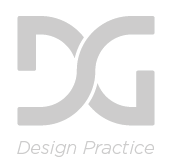We started the session on canons of page construction by looking at the golden ratio and the theory surrounding this. This is something that I have looked into in a fair bit of depth before so i felt comfortable with the concept. We looked at how the golden ratio can be used within page construction and experimented with drawing out grids using this theory.
We also spent some time looking at the golden ratio in Graphic design and some examples of where it has been used. Lots of logos supposedly use the golden ratio however after doing some research I found that some of the logo's people claim to use the golden ratio actually don't at all. For example, the apple logo is often accredited to golden ratio proportions when in fact it doesn't use this 'divine proportion.' I also found out today that the golden ratio can be applied to type. I have never thought about trying to use this ratio with type but it makes perfect sense. For example a 55pt heading would be complimented by a 34pt sub heading. I did a project on the golden ratio last year and I decided to look back at this to refresh my knowledge on it.
Using intersecting lines running from one corner of the spread to the other and one corner of the page to the other it is incredibly easy to determine where the text should be placed on the page. The smaller rectangle in blue adheres to the van de graaf canon. I also found through experimentation that using these lines but drawing the rectangle to the line that intersects the spread rather than the line that intersects the page creates a rectangle very close to divine proportions.
I decided to experiment with the golden ratio grid that I determined on paper by actually applying this to page design.
I used Illustrator to produce the grid and then put this into inDesign.
I set up my margins on the inDesign document so that the area inside the margins was as close as possible to a golden rectangle.
I experimented with laying out some placeholder text in different ways using this grid and found that the results were aesthetically pleasing and that the grid was nice to work with and really versatile. I may use this grid or one similar next time I am producing something for print and I think i will definitely use it for my web design.























































